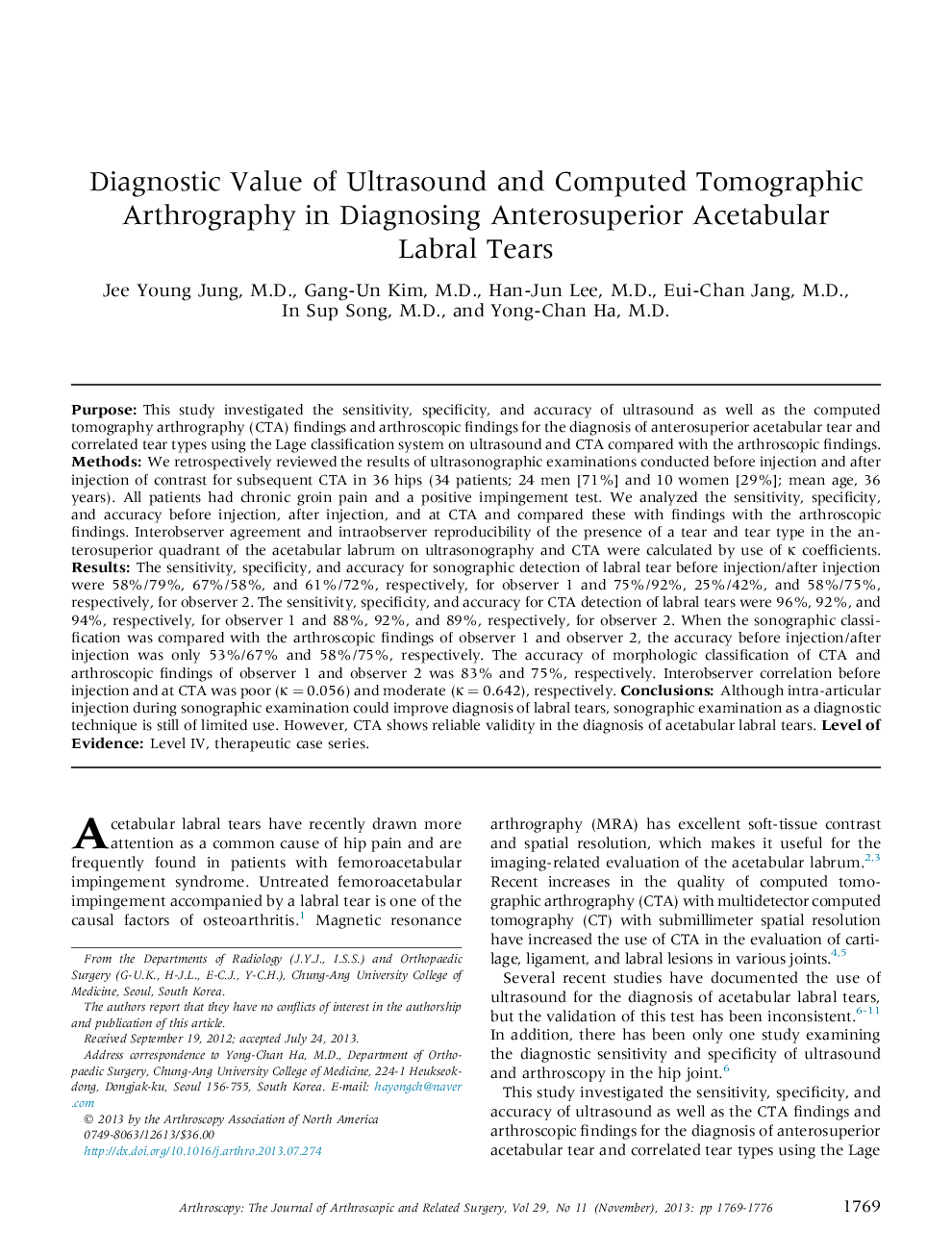| Article ID | Journal | Published Year | Pages | File Type |
|---|---|---|---|---|
| 4043720 | Arthroscopy: The Journal of Arthroscopic & Related Surgery | 2013 | 8 Pages |
PurposeThis study investigated the sensitivity, specificity, and accuracy of ultrasound as well as the computed tomography arthrography (CTA) findings and arthroscopic findings for the diagnosis of anterosuperior acetabular tear and correlated tear types using the Lage classification system on ultrasound and CTA compared with the arthroscopic findings.MethodsWe retrospectively reviewed the results of ultrasonographic examinations conducted before injection and after injection of contrast for subsequent CTA in 36 hips (34 patients; 24 men [71%] and 10 women [29%]; mean age, 36 years). All patients had chronic groin pain and a positive impingement test. We analyzed the sensitivity, specificity, and accuracy before injection, after injection, and at CTA and compared these with findings with the arthroscopic findings. Interobserver agreement and intraobserver reproducibility of the presence of a tear and tear type in the anterosuperior quadrant of the acetabular labrum on ultrasonography and CTA were calculated by use of κ coefficients.ResultsThe sensitivity, specificity, and accuracy for sonographic detection of labral tear before injection/after injection were 58%/79%, 67%/58%, and 61%/72%, respectively, for observer 1 and 75%/92%, 25%/42%, and 58%/75%, respectively, for observer 2. The sensitivity, specificity, and accuracy for CTA detection of labral tears were 96%, 92%, and 94%, respectively, for observer 1 and 88%, 92%, and 89%, respectively, for observer 2. When the sonographic classification was compared with the arthroscopic findings of observer 1 and observer 2, the accuracy before injection/after injection was only 53%/67% and 58%/75%, respectively. The accuracy of morphologic classification of CTA and arthroscopic findings of observer 1 and observer 2 was 83% and 75%, respectively. Interobserver correlation before injection and at CTA was poor (κ = 0.056) and moderate (κ = 0.642), respectively.ConclusionsAlthough intra-articular injection during sonographic examination could improve diagnosis of labral tears, sonographic examination as a diagnostic technique is still of limited use. However, CTA shows reliable validity in the diagnosis of acetabular labral tears.Level of EvidenceLevel IV, therapeutic case series.
